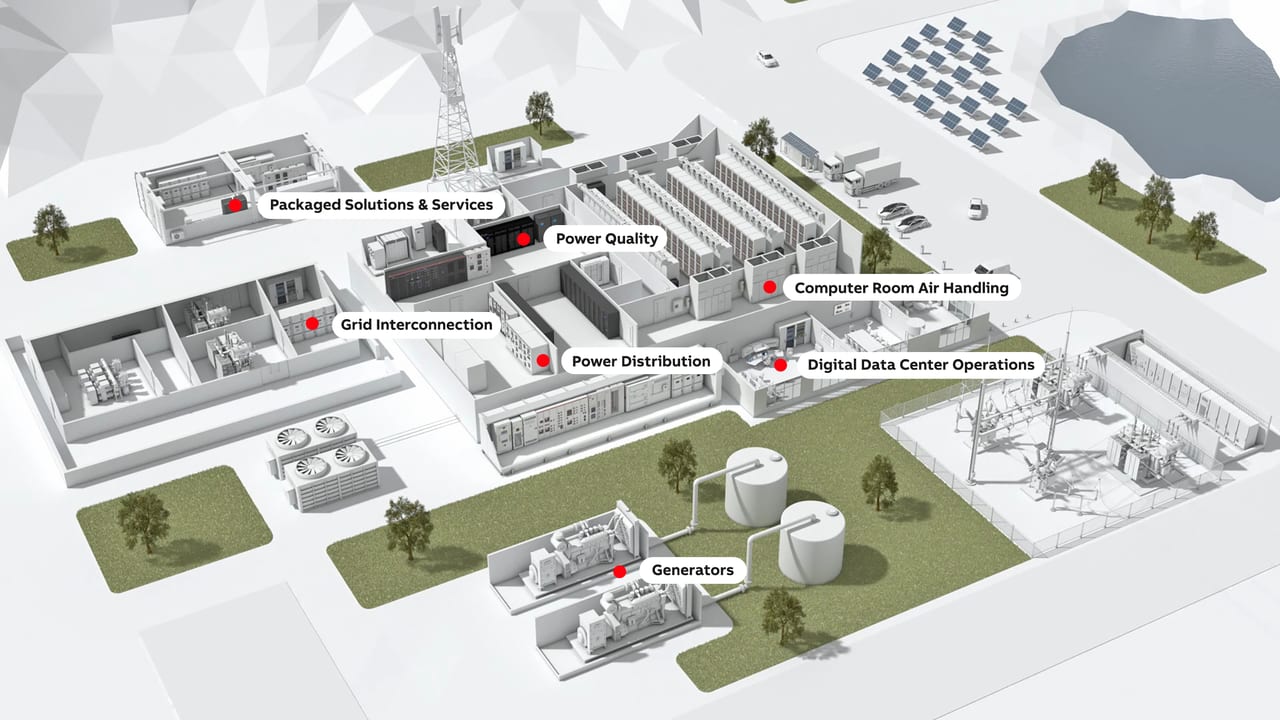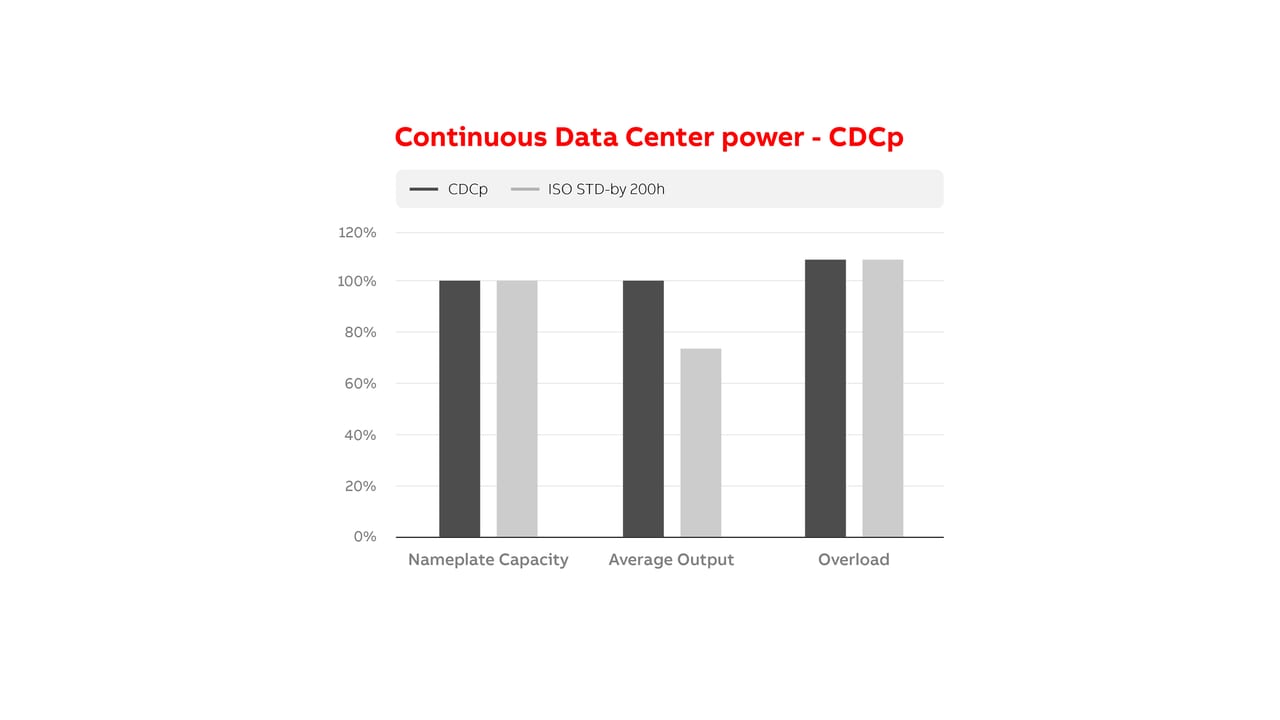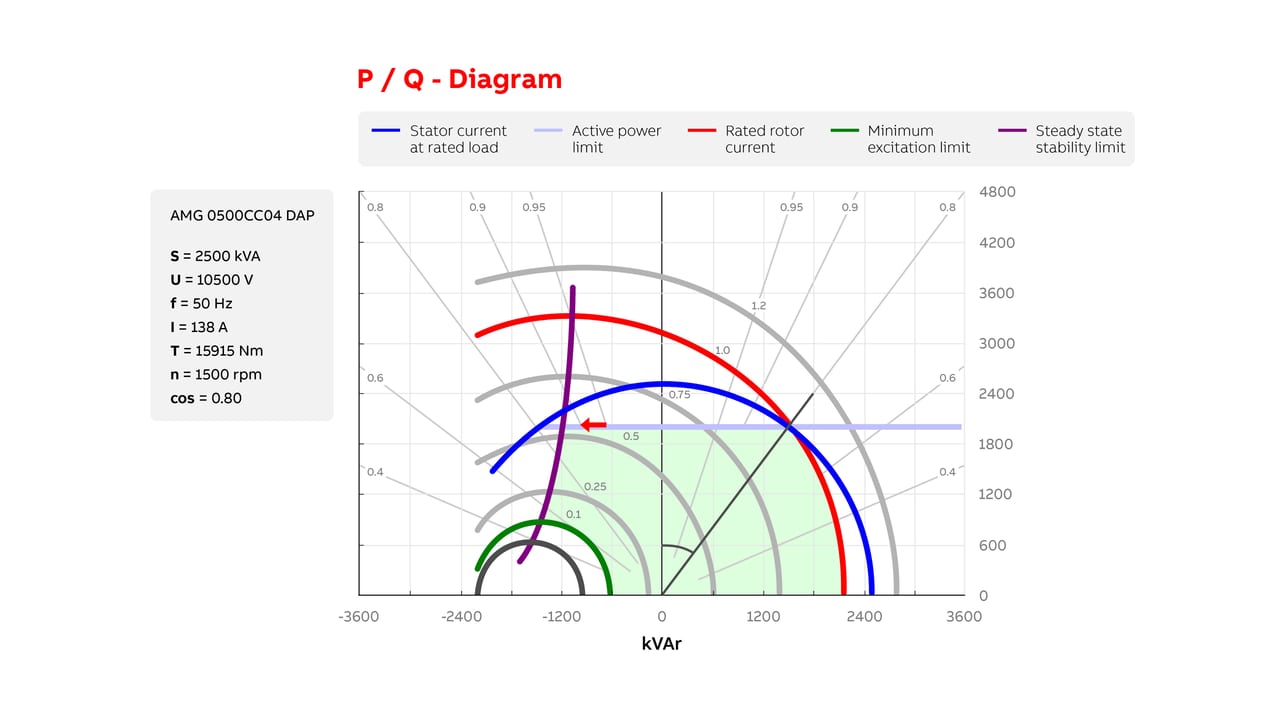// Total Cost of Ownership //
Total cost of ownership comes into play when selecting the right generator
Capex Vs. Opex — Data Center Operators Shift Their Focus

Generators play a vital role in ensuring 100% uptime and reliability of service for data centers.
Photos courtesy of ABB
Data centers come in all sizes with varying power demands. Some small facilities draw just a few kilowatts (kW) while hyperscalers are in the megawatt (MW) range. Requirements for availability (uptime) can also differ greatly. The Uptime Institute classifies data centers according to the following tier ratings.
- TIER I — 99.671% availability
- TIER II — 99.741% availability
- TIER III — 99.982% availability, unlimited operation hours
- TIER IV — 99.995% availability, unlimited operation hours
In practice, this establishes the acceptable period of downtime ranges from 144 minutes per month for Tier 1 facilities to just two minutes per month for Tier IV.
In general, Tiers I and II ratings can be accomplished by using standard backup generators suitable for a couple hundred hours of operation a year. In contrast, Tiers III and IV require gensets rated for continuous operation.
Because most data centers are powered by stable grids, their emergency generators are called into operation infrequently for short periods of time. Therefore, they can be specified to support a high-percentage load continuously when called into operation. This gives rise to the rating known as continuous data center power (CDCp), which has no limitations on average power, unlimited operational hours, and 110% overloadability for up to 12 hours. Figure 1 compares CDCp with the ISO standby rating.

Figure 1 – This graph shows continuous data center power.
In addition to the TIER level and CDCp rating, the next step is to ensure the genset design will deliver optimum performance. The key considerations are startup time, excitation and control systems, block loadability, and leading power factor.
Startup time
For data centers, a typical startup time requirement is 10 to 30 seconds. In general, an internal combustion engine is superior to a turbine, and liquid fuel (diesel) performs better than gas.
Excitation and Control
Once the genset is gaining some speed, the excitation and control by the automatic voltage regulator (AVR) kicks in. There are several excitation methods available, such as shunt+boost, permanent magnet generator (PMG), auxiliary winding regulation excitation principle (AREP), self-excitation, etc. PMG is most common for 1- to 3-MW sets, while AREP is for smaller, low-voltage, noncritical systems.
Figure 2 shows measured ramp-up and voltage buildup graphs for a 3 MW, 11 kV, PMG-excited, liquid-fuel genset. It takes less than 10 seconds to reach full speed and full voltage ready to supply power.

Figure 2 – This graph shows genset voltage buildup (knee point at 60% rpm).
Block Loadability
Block loadability is an important facet of data center gensets. It describes the ability of a running generator to support a sudden increase or decrease in load. One example is when the genset has to provide fault ride-through to meet grid code requirements. Block loadability is also of particular interest for the growing number of cases where gensets are intended to support loads outside the data center. These include “balancing” or “peaker” applications to help stabilize and support the grid when the output from renewable energy resources is low.
Leading Power Factor
The final consideration is the “historical weighting” of backup generators linked to leading power factor (PF). In data centers, this occurs at times when the UPS is out of order and the load on the genset is highly capacitive — from the IT equipment. If the leading PF (or negative kVAR) limit is exceeded, the generator approaches its unstability limits and could trip offline.
Historically, generators were oversized to ensure operation over a certain kVAR range. This added cost can be avoided through careful design to allow extensive leading PF operation. In addition, the parameters, especially reactance values, must be designed properly to “push” the stability limit left, as shown by the purple line in Figure 3. This example of a 2.5-MVA, 10.5-kV generator shows that by enabling a leading PF of 0.9 (instead of 0.95), there is an additional +300 kVAR of room to play with (as shown by the red arrow).

Figure 3 - Extensive leading PF operation avoids generator oversizing.
Shifting From Capex to Opex
Making the correct generator selection for data centers can have a significant influence on the capital expenditure (capex) for the project. That is why many major players prefer to reproduce existing validated concepts to benefit from the lowest unit cost. They achieve scalability simply by adding the right number of identical gensets.
This capex-centered approach is set to change as asset owners place an increasing emphasis on their opex. While costs might differ widely between applications and locations, the main drivers will always be quality and serviceability. There is also scope for the adoption of features already proven by base load generators, such as predictive maintenance and remote monitoring. What this means is that the original cost price of a genset will become of less significance for data center operators. Rather, they could take a broader perspective that considers the total cost of ownership (TCO) of their critical backup generators and how they might provide services to the local grid that makes them a revenue source rather than a running cost.
Markku Vainamo
Markku Vainamo is global product manager for generators at ABB.

